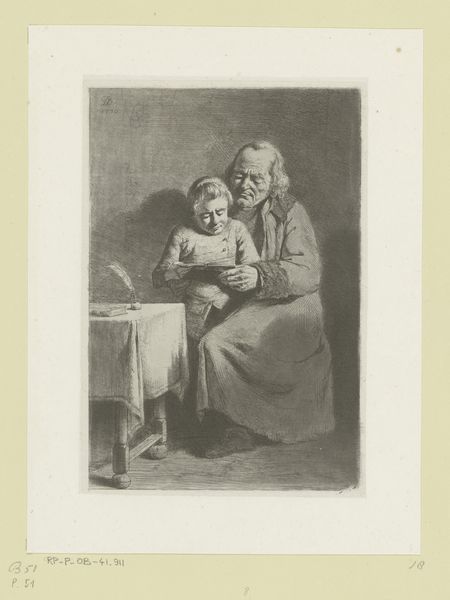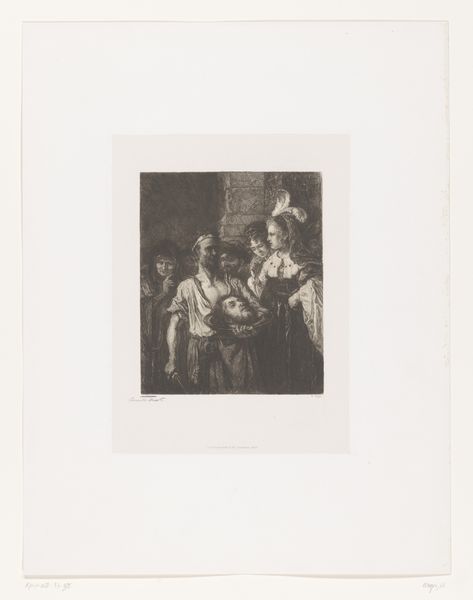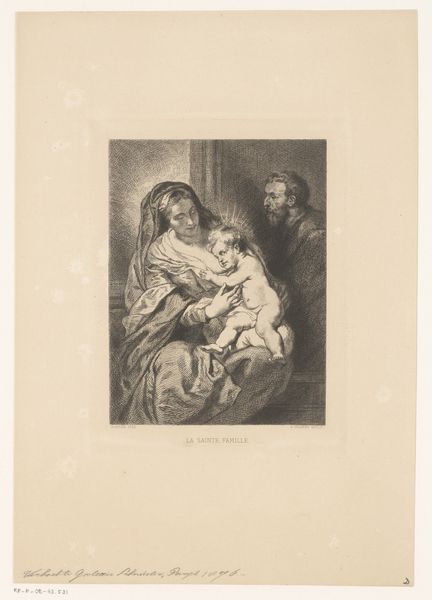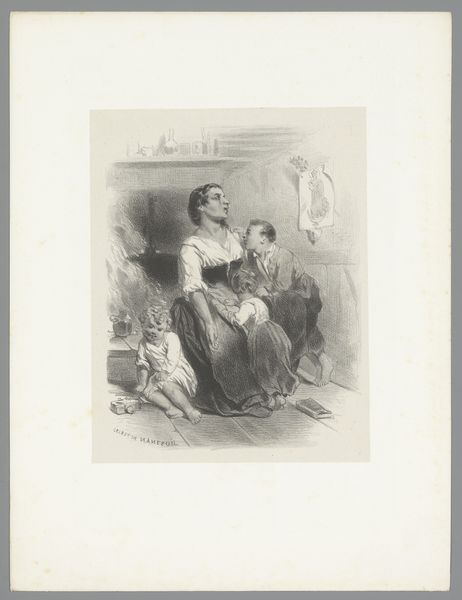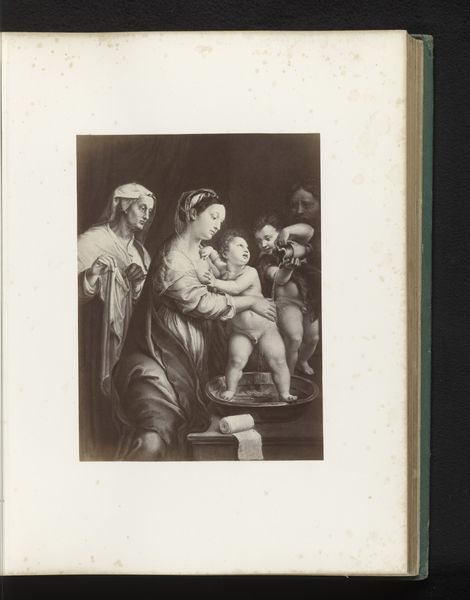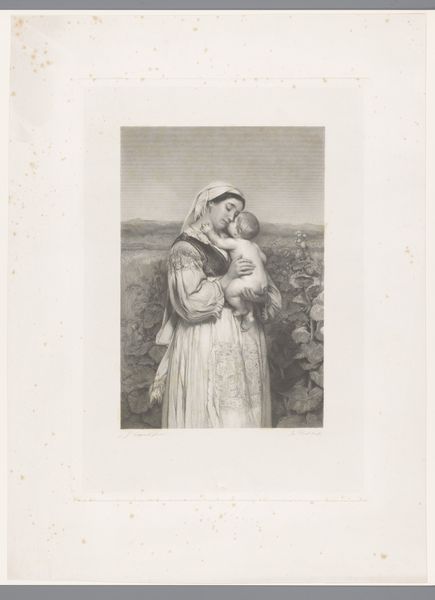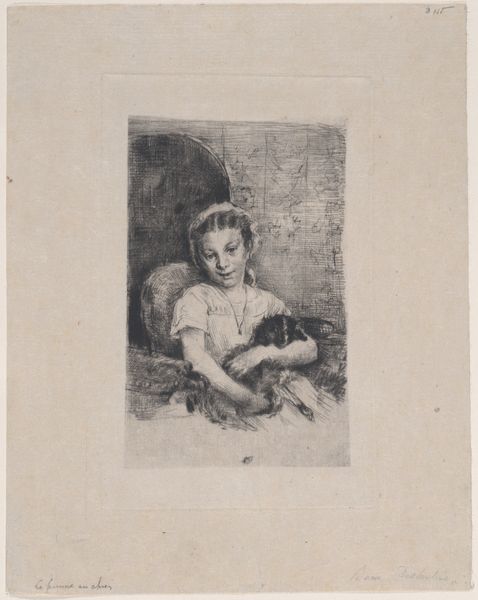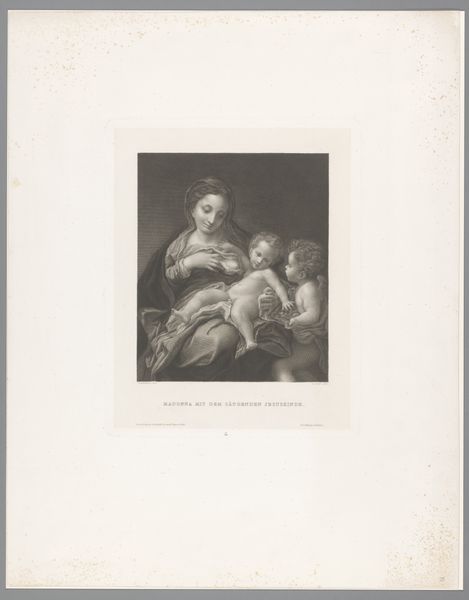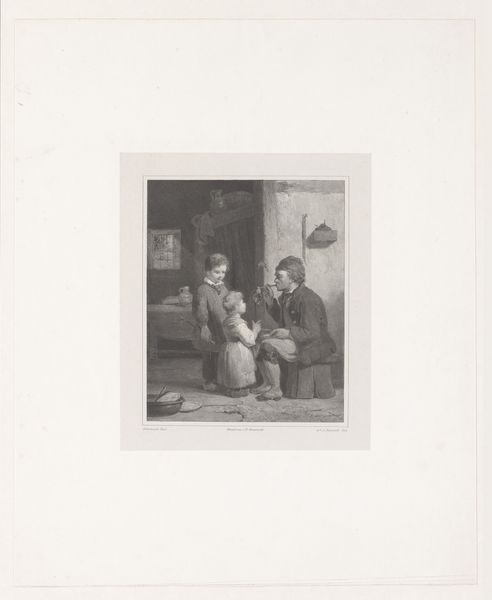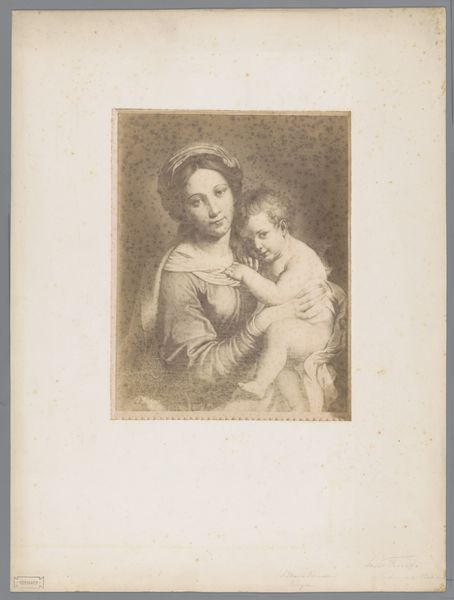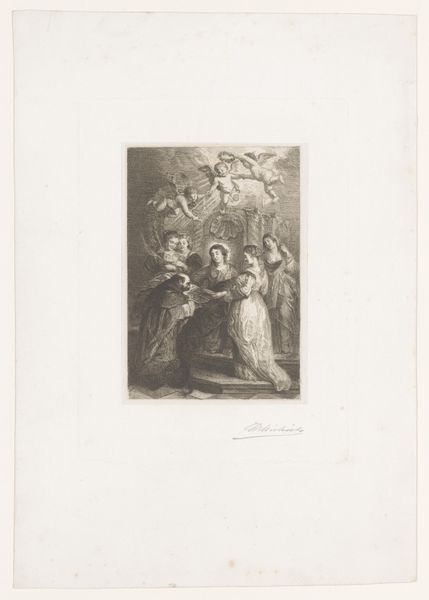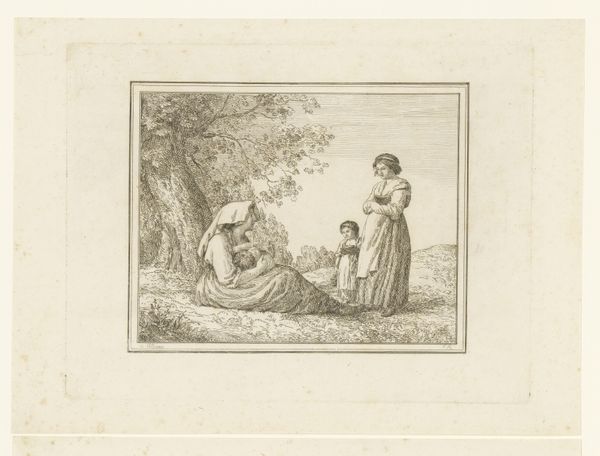
drawing, print, etching, paper
#
portrait
#
pencil drawn
#
drawing
# print
#
etching
#
pencil sketch
#
figuration
#
paper
#
child
#
pencil drawing
#
pencil work
#
genre-painting
Dimensions: height 340 mm, width 260 mm
Copyright: Rijks Museum: Open Domain
Curator: So, here we have "Two Girls and a Child at a Well," made before 1890 by Jan Mesker, using etching and printmaking on paper. Editor: It feels very intimate, a snapshot of daily life. What strikes me most is how it captures a specific moment, but the medium feels very intentional for this kind of portrayal. What do you make of this etching? Curator: Let's consider the material reality of its production. The etching process itself – the labor involved in preparing the plate, applying the acid, making the print -- what does that imply about the artist's relationship to the subject matter? Is it a celebration of labour itself, or a commentary on the availability and nature of women’s and children’s work? Editor: I see your point. Thinking about the labor connects it to social class and access to resources at that time. Would a painting have offered the same effect, conveying a similar understanding of work and access, compared to the etching on paper? Curator: It’s not just about technical skill, is it? Consider who would have had access to these kinds of prints. Who could afford them? How did the artist see its market position? Editor: The process allows for multiple copies. Making it somewhat more affordable and reproducible than painting... I see how this makes a social statement about availability and access of art and perhaps democratizing its subject. Curator: Precisely. And that relationship is critical to understand art, even, or especially, in genre scenes. What did we uncover with our closer material-minded look? Editor: It revealed the socioeconomic context surrounding its creation, challenging the assumption that art transcends its material origins. Curator: Indeed. That’s precisely it!
Comments
No comments
Be the first to comment and join the conversation on the ultimate creative platform.
